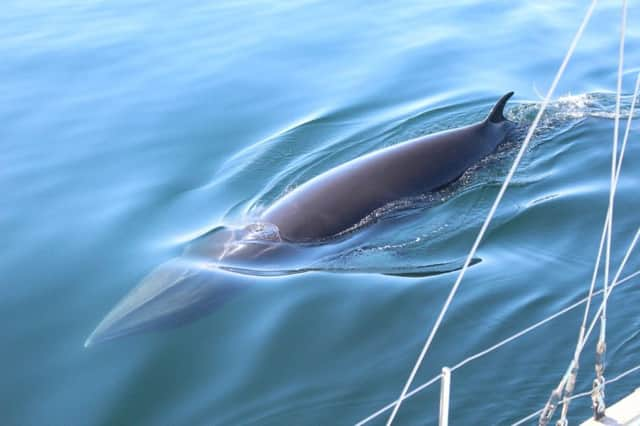Record number of minke whales spotted in Scotland


Scientists believe the findings could signal a significant increase in the local population, or possibly an influx of the mammals from elsewhere.
The latest surveys also recorded the highest annual sightings of common dolphins in more than a decade.
Advertisement
Hide AdAdvertisement
Hide AdThe studies were carried out by researchers and volunteers from the Hebridean Whale & Dolphin Trust (HWDT) between May and October.
The research forms part of the charity’s unique long-term monitoring of whales, dolphins and porpoises – collectively known as cetaceans – in west coast waters. Information on basking sharks is also collected during the boat-based surveys, which began in 2003.
Results show there has been a steady increase in sightings of immature minke whales since 2011, but the trend has been particularly marked this year.
The 2015 surveys documented an encounter rate of one youngster per 286km – three times the average over the past 12 years.
Common dolphins were once an unusual sight in the Hebrides, but encounters with the species have more than doubled over the past 12 years. Recent figures show 723 individuals were observed during 63 encounters.
There was also a dramatic increase in sightings of rare white-beaked dolphins, which almost doubled since 2014. However, many of the encounters took place on a single day near the Butt of Lewis.
The trust has welcomed the findings but say the reasons for the increases are unclear.
Kerry Froud, HWDT biodiversity officer, said: “These intriguing changes in Scotland’s marine life highlight the importance of long-term monitoring of cetaceans so that we can better understand what is happening in our waters, and then make management recommendations to better protect this world-class area of marine biodiversity.”
Advertisement
Hide AdAdvertisement
Hide AdWestern Scotland’s seas are one of Europe’s most important habitats for cetaceans. So far 24 of the world’s 83 species have been found in the region, many of them globally important.
Despite measuring up to 10m long, the minke is the smallest baleen whale found in Scottish waters. It has no teeth, instead using baleen plates to sift fish and krill out of the water before swallowing it whole.
HWDT holds a log of 125 minkes known to have visited the Hebrides. It shows some individuals return to the same areas annually.